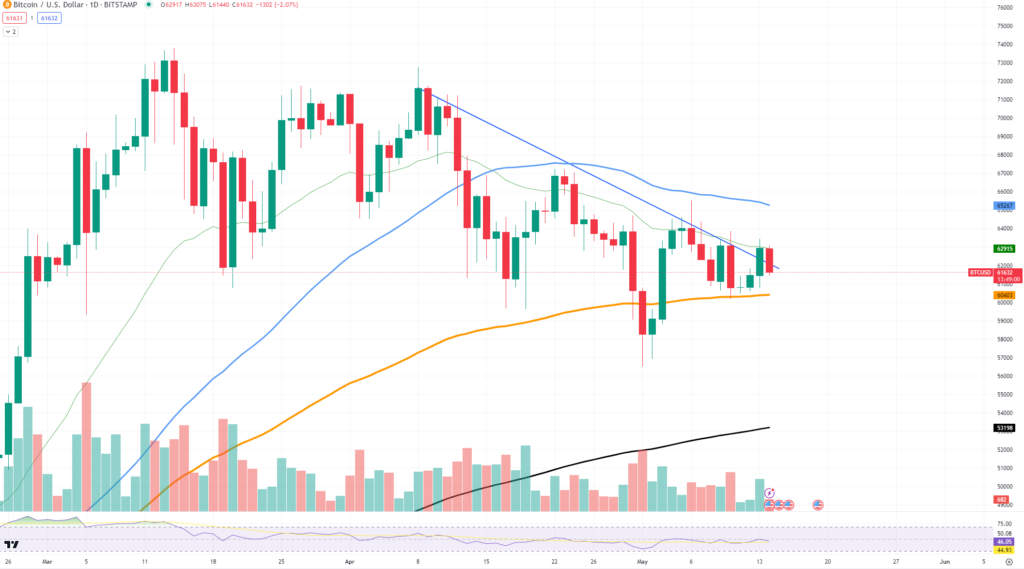
Miners are having issues as a result of lower Bitcoin fees. The daily average network fees increased following the latest halving, which gave Bitcoin miners some respite. However, fees have dropped since the Runes protocol’s initial surge of users subsided, putting further pressure on miners who now face lower returns.
Some of the miners’ post-halving angst had been momentarily relieved by the increased fees. For instance, in April, transaction fees made up 16% of the Bitcoin that Marathon Digital generated, a substantial rise from 4.5% in March. The halving usually causes miners to sell Bitcoin to fund the price of forging new blocks, but this rise in fees helped alleviate some of the financial burden.

But now that fees are dropping, miners are under pressure once more. On their balance sheets, bitcoin miners normally store BTC as current assets because they depend on their capacity to sell holdings to cover operational costs. If miners are compelled to sell even a portion of their holdings, this may result in more selling pressure on the market.
For example, Riot Platforms has 8,872 BTC worth over $500 million, while Marathon Digital has 17,631 BTC worth over $1.1 billion. The markets for Bitcoin may suffer if these miners are forced to sell, particularly in the summer when trade volume drops and liquidity evaporates. The market depth dropped as low as $250 million in August of last year, suggesting possible weakness, even if it has since rebounded to $407 million as of May 8.
The post-halving tension had momentarily subsided due to higher costs. For instance, in April, transaction fees made up 16% of Marathon Digital’s Bitcoin earnings, an increase from 4.5% in March. A portion of the expenses related to the creation of additional blocks were offset by this charge increase. But now that fees are dropping, miners are under pressure once more.


















